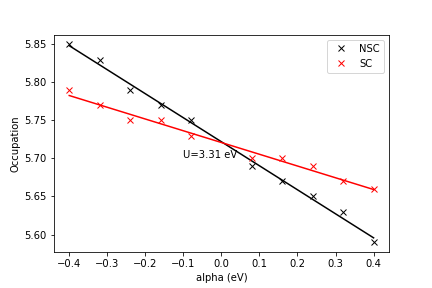https://github.com/zhubonan/castep-linear-response-u
Example for calculating U value in DFT+U using CASTEP with the ab inito linear response method
https://github.com/zhubonan/castep-linear-response-u
Last synced: about 2 months ago
JSON representation
Example for calculating U value in DFT+U using CASTEP with the ab inito linear response method
- Host: GitHub
- URL: https://github.com/zhubonan/castep-linear-response-u
- Owner: zhubonan
- Created: 2020-11-04T23:44:34.000Z (over 4 years ago)
- Default Branch: master
- Last Pushed: 2020-11-04T23:46:45.000Z (over 4 years ago)
- Last Synced: 2025-03-30T10:12:35.825Z (3 months ago)
- Language: Jupyter Notebook
- Size: 726 KB
- Stars: 2
- Watchers: 1
- Forks: 3
- Open Issues: 0
-
Metadata Files:
- Readme: README.md
Awesome Lists containing this project
README
# Computing ab inito U value using the linear response method with CASTEP
## How to run
1. Have CASTEP compiled and `castep.mpi` in the `$PATH`
2. `base script.sh`
3. Run this notebook or `python post-process.py`

## How it works
Adjust the `HUBBARD_ALPHA` value and record the initial and final occupations of the Mn d levels when continuing from the unperturbed run (`base_calc`).
The value of U is extracted using the gradient of the two response curves.
The example in http://hjkgrp.mit.edu/content/calculating-hubbard-u is reused here and the same methodology is followed.
The more `self-consistent` U can be computed by repeating the procedure with different input value for the U.
Reference:
> Cococcioni, M.; de Gironcoli, S. Linear Response Approach to the Calculation of the Effective Interaction Parameters in the LDA+U Method. Phys. Rev. B 2005, 71 (3), 035105. https://doi.org/10.1103/PhysRevB.71.035105.
DISCLAIMER: Use at your own risk. Please raise an issue if you think the method here is not correct due to implementation details.